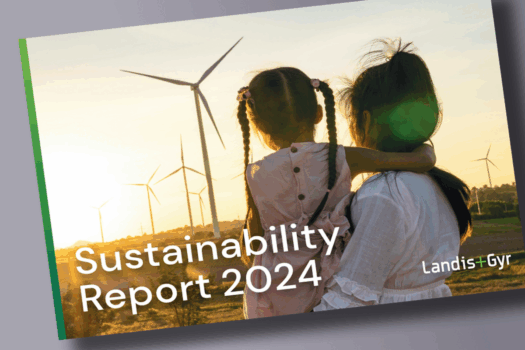
With the presentation of the “European Green Deal” in 2019, it seems clear to everyone in the European Union (EU) as well as other parts of Europe that the topic of sustainability will remain high on the political agenda for years to come. Climate neutrality by 2050 is the ultimate goal, and the adoption of an EU action plan with measures for the financial sector is therefore not surprising. Among other goals, the aim is to steer investments into sustainable technologies and business. The EU action plan includes the EU taxonomy, a classification system that establishes a list of environmentally sustainable activities.
How does the EU taxonomy work, and what does it aim to achieve?
Back in May 2018, the EU Commission submitted various legislative proposals through its action plan on sustainable finance. One of them is the EU taxonomy regulation. It is the EU’s classification tool to determine which economic activities may be considered “green.” In other words, the taxonomy defines what is sustainable and what is not, and establishes the following six objectives:
- Climate change mitigation
- Adaptation to climate change
- Sustainable use and protection of water and marine resources
- Transition to a circular economy
- Pollution prevention and control
- Protection and restoration of biodiversity and ecosystems
The taxonomy is designed to inhibit greenwashing and encourage more transparency regarding the level of sustainability of financial products. It is also intended to help investors and companies make informed decisions about environmentally friendly economic activities.
Establishing the basis for the EU taxonomy is the taxonomy regulation, which was issued in June 2020. The EU Commission will publish additional “delegated acts” in the future, which define the technical verification criteria. Two delegated acts have already been published: sustainable activities for climate change adaptation and mitigation targets. Based on the criteria, companies can already check whether their products or services are in line with the taxonomy. Currently, the taxonomy covers environmentally sustainable economic activities with a focus on climate protection aspects. In the future, additional social criteria and governance aspects will also be covered.
The EU taxonomy and its delegated acts may seem confusing. Ultimately, however, it is simply a classification regulation intended to provide a better overview of sustainable economic activities. Above all, this means that the taxonomy does not divide companies into “good” and “bad” ones, nor does it stop the possibility of investing in certain areas. Some economic activities, nonetheless, might not be marked as “green” in the future.
Companies are considered taxonomy compliant if:
- their economic activities make a significant contribution to one of the six environmental objectives mentioned above.
- they do not cause significant harm (DNSH) to the other five environmental objectives.
- they meet the technical test criteria.
To whom does the taxonomy apply?
The taxonomy was developed to enable financial market participants to better assess asset investments that are part of their sustainable products. It follows that companies must apply the taxonomy because they are the ones that represent a large part of the assets. The regulation also applies to companies that are already required to publish non-financial reporting under the NFRD (Non-Financial Reporting Directive). The NFRD is currently being revised, and draft legislation of the Corporate Sustainability Reporting Directive (CSRD) has already been published by the EU Commission. The CSRD will expand the number of companies that are covered under the directive and thus subject to compliance. Taxonomy and CSRD are closely linked because the requirements for non-financial reporting (sustainability reporting) for companies will be expanded.
What are the implications on companies?
In July 2021, the EU Commission published another delegated act that supplements Article 8 of the taxonomy regulation, which sets out reporting obligations. If companies are subject to NFRD, they must report on the extent to which their economic activities are sustainable. The Commission specifies which content they must disclose under the taxonomy and how this information is to be presented. The methodology for fulfilling the disclosure obligation is also specified. This creates an interplay between previous regulations in the EU and the EU taxonomy. Thus, to some extent, the taxonomy is the link between NFRD, the CSRD, and the Sustainable Finance Disclosure Regulation (SFDR): On the one hand, large companies must report on the proportion of their economic activities that are taxonomy compliant. On the other hand, the SFDR requires reporting on sustainable financial products. The focus here is precisely on those products that are taxonomy compliant. The result: Financial market players are informed about the sustainable activities of a company.
Due to a globally interconnected financial market, the scope of the application of the taxonomy regulation is expanding internationally. Swiss financial market participants operating in the EU are also affected. The EU taxonomy affects, for example, providers of financial products and companies that wish to sell financial products to EU customers. For Swiss companies, the EU regulations and other sustainability plans in the financial sector have an impact on non-financial reporting, because the key figures to be reported also affect supply chains. In addition, Swiss companies could be affected by the reporting requirements due to their international and/or cross-border activities. Consequently, Swiss financial market participants will also have to comply with the reporting regulations introduced by the EU. The far-reaching consequences will become clearer as more delegated acts are published. One positive effect is that Swiss investors will also benefit from the new regulations due to greater transparency. The new standards give everyone the opportunity to make informed decisions about sustainable ecological activities.
The EU sets certain sustainability standards for the financial sector that have been applied either inconsistently or voluntarily in Switzerland. At the same time, the Federal Council has announced that Switzerland is to become a leading hub for sustainable financial services and that the recommendations of the Task Force on Climate-Related Financial Disclosures (TCFD) are to become binding. The EU standards could influence future Swiss regulations.
TCFD Recommendations
The recommendations were drafted by the Financial Stability Board and serve to improve and expand the reporting of climate-related financial information. For more information, please see our article “What Is the TCFD and Why Is It Important?”
When does the EU taxonomy apply?
The taxonomy regulation provides the framework for the EU classification system. The detailed implementation issues are defined in the “delegated acts.” As the regulation no longer needs to be transposed into national law, the EU taxonomy has already been formally effective since 2020. EU companies that are already required to report non-financially under the NFRD will have to report on their “green” economic activities under the taxonomy from 2022 (for the 2021 financial year). In the future, further delegated acts will be published, so that companies will have to apply additional criteria.
Will there be a Swiss taxonomy?
In this regard, the Federal Council notes in its report “Sustainability in the Swiss Financial Sector” (in German) in the chapter “Measures” that a regulation similar to the EU taxonomy is currently not planned because, among other reasons, such a step would be very “complex” from a “regulatory point of view.” Nevertheless, developments at the EU level and internationally are being “closely followed.” Thus, there are indications that pressure on Swiss companies is not only increasing indirectly via European regulations and market requirements but also from within Switzerland.
How we support companies with regard to the EU taxonomy
We develop recommendations for corporate communications, investor relations and senior management, helping companies position themselves for the EU action plan, including proposed and enacted legislation. This is not a mere compliance exercise. Rather, the focus is on clear added value for companies: They gain clarity about their path to more sustainability and improve their credibility on this critical topic.
Get in touch. We are happy to tell you more about it.





